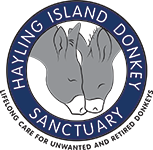Mount Harriet 11th to 12th June 1982
 Introduction
Introduction
In the last land action to take place during the night of 11/12 June, 42 Commando attacked Mt Harriet. This was a different proposition in many ways to the other mountain defences. The Mount Harriet positions had been prepared almost as soon as the Argentines landed, as they considered the most likely line of attack to recover the islands to be a landing south of Stanley, much as they themselves had done. The mountain was defended in depth with nine minefields to the south and west protecting the long, open approaches, and well sited firing positions in the hard, jagged rock that made up the slopes to the peak. The whole of C Company of the 4th Regiment was based on the mountain, along with various support units making it a formidable position indeed. 42 Commando had been based on Mount Challenger and Mount Wall prior to the attack, and had been carrying out patrols to recce the area in detail.
 The patrols had been finding routes through minefields and harassing the Argentines from the west, in an attempt to make the enemy think that this would be the direction that the attack would finally come from. With the information obtained from the patrols Lieutenant Colonel Nick Vaux and his staff decided a direct assault would be both bloody and costly. Mount Harriet was going to be a very tough nut to crack. A flanking attack was planned, possible because a route around the southern flank had been discovered through the minefields. Captain Peter Babbington’s K Company would attack the eastern end of the mountain, then one hour later L Company would attack the western ridges moving on to take Goat Ridge after the whole of Harriet had been secured. J Company would stay as a reserve on Mt Wall and act as a diversion, making as much noise as possible.
The patrols had been finding routes through minefields and harassing the Argentines from the west, in an attempt to make the enemy think that this would be the direction that the attack would finally come from. With the information obtained from the patrols Lieutenant Colonel Nick Vaux and his staff decided a direct assault would be both bloody and costly. Mount Harriet was going to be a very tough nut to crack. A flanking attack was planned, possible because a route around the southern flank had been discovered through the minefields. Captain Peter Babbington’s K Company would attack the eastern end of the mountain, then one hour later L Company would attack the western ridges moving on to take Goat Ridge after the whole of Harriet had been secured. J Company would stay as a reserve on Mt Wall and act as a diversion, making as much noise as possible.
After dark on the 11th June K and L Companies set off for the start line. They had to march eight miles from Mount Wall to the start line in a southerly arc across very open ground. Because this ground was in full view of the Argentine positions, the march had to be made as stealthily as possible, threading through minefields, hoping not to be detected and lose the element of surprise. As they made their slow and painstaking approach, artillery fire was striking the western defences on Mount Harriet and as an additional deception, captured Argentine weapons were being fired to give the impression that Argentine outposts were in action against a British force attacking the western face. Because the start line was in 5 Brigade’s area of responsibility, a Reece Platoon from the Welsh Guards were supposed to meet the Marines and guide them to the start line, having secured the area, but they could not be found. Some accounts say that the Guards were finally found sitting by a fence chatting and smoking, compromising the security of the start line. The reaction of the Marines to this situation is better imagined than described.
 Due to the difficulty finding the Welsh Guards H-hour was delayed by one hour, so the two Companies could secure their respective start lines. At 2200 hrs the code word ‘Vesuvius’ was transmitted and the battle begun. J Company on Mount Wall started firing onto the forward slopes of the mountain as a decoy, which they carried on for the whole battle, and K Company left their start line. K Company advanced with 1 Troop to the left, 2 Troop to the right and 3 Troop to the rear, leaving a Company frontage of 150 metres. They moved in total silence and covered 700 metres before 1 Troop engaged the enemy. Artillery fire was called for, and a walking barrage of great accuracy preceded the Marines about 100 metres ahead of their advance. At this point, 2 Troop rushed forward and started clearing the most eastern end of Harriet. They cleared four mortar positions in only 45 minutes, but during this attack Corporal Larry Watts was killed storming a tented position. Six Argentines were killed in the almost hand-to-hand fighting, and over twenty more were captured. While 2 Troop had been clearing the eastern end, 1 and 3 Troops had started to work their way westwards through the rocks and up what was effectively the back of the mountain.
Due to the difficulty finding the Welsh Guards H-hour was delayed by one hour, so the two Companies could secure their respective start lines. At 2200 hrs the code word ‘Vesuvius’ was transmitted and the battle begun. J Company on Mount Wall started firing onto the forward slopes of the mountain as a decoy, which they carried on for the whole battle, and K Company left their start line. K Company advanced with 1 Troop to the left, 2 Troop to the right and 3 Troop to the rear, leaving a Company frontage of 150 metres. They moved in total silence and covered 700 metres before 1 Troop engaged the enemy. Artillery fire was called for, and a walking barrage of great accuracy preceded the Marines about 100 metres ahead of their advance. At this point, 2 Troop rushed forward and started clearing the most eastern end of Harriet. They cleared four mortar positions in only 45 minutes, but during this attack Corporal Larry Watts was killed storming a tented position. Six Argentines were killed in the almost hand-to-hand fighting, and over twenty more were captured. While 2 Troop had been clearing the eastern end, 1 and 3 Troops had started to work their way westwards through the rocks and up what was effectively the back of the mountain.
 The Sections ‘pepperpotted’ uphill with great skill and good radio communications. Every time they were held up they called for artillery fire. The radio net was well disciplined to control the supporting fire, first star shells were fired which lit up the area, then the high explosive shells followed and the nearest radio set to the fall of shot issued the fire corrections. Milan anti-tank missiles were also fired from the fire-support base 800 metres away and the smaller anti-tank rockets were once again used in their ‘bunker-buster’ role. A fire was started in a medical store, and since the news of the battle and the fall of the eastern end of the mountain was now with the Argentine commanders, they ordered their artillery to fire on the mountain using the fire as an aiming point. British and Argentine shells fell together, causing casualties and confusion on both sides. K Company captured most of their objective without any further casualties. They then had to cross a saddle, which was part of L Company’s objective, to reach and secure the first part of the next ridge. However they were pinned down by a machine gun dominating the saddle.
The Sections ‘pepperpotted’ uphill with great skill and good radio communications. Every time they were held up they called for artillery fire. The radio net was well disciplined to control the supporting fire, first star shells were fired which lit up the area, then the high explosive shells followed and the nearest radio set to the fall of shot issued the fire corrections. Milan anti-tank missiles were also fired from the fire-support base 800 metres away and the smaller anti-tank rockets were once again used in their ‘bunker-buster’ role. A fire was started in a medical store, and since the news of the battle and the fall of the eastern end of the mountain was now with the Argentine commanders, they ordered their artillery to fire on the mountain using the fire as an aiming point. British and Argentine shells fell together, causing casualties and confusion on both sides. K Company captured most of their objective without any further casualties. They then had to cross a saddle, which was part of L Company’s objective, to reach and secure the first part of the next ridge. However they were pinned down by a machine gun dominating the saddle.
 In another example of the inventiveness and initiative of the average Royal Marine, Corporals Steve Newland, Mick Eccles and ‘Sharkey’ Ward worked together to take out the machine gun. Cpl Newland shot the machine gunner with excellent marksmanship, before he was shot in the legs by a second rifleman behind the gun position as he moved forward to take advantage of the temporary lull in the firing. Cpls Eccles and Ward then fired two 66 mm rockets with great accuracy into the bunker, and moved forward rapidly until they were standing against the rock face directly below the Argentine position. They were ready to back up their earlier attack by throwing grenades into the bunker, when Lieutenant Heathcote, the Troop Commander, and a machine-gunner, Marine Barnett, arrived and called on the Argentines to surrender. There was some confusion, and the two Corporals clambered over the rock wall into the bunker in very aggressive style. One Argentine looked as if he was going to throw a grenade so he was shot, and the other seventeen enemy soldiers in the position surrendered to the four Marines. All three of the Corporals were awarded the Military Medal for their quick thinking and tremendous courage.
In another example of the inventiveness and initiative of the average Royal Marine, Corporals Steve Newland, Mick Eccles and ‘Sharkey’ Ward worked together to take out the machine gun. Cpl Newland shot the machine gunner with excellent marksmanship, before he was shot in the legs by a second rifleman behind the gun position as he moved forward to take advantage of the temporary lull in the firing. Cpls Eccles and Ward then fired two 66 mm rockets with great accuracy into the bunker, and moved forward rapidly until they were standing against the rock face directly below the Argentine position. They were ready to back up their earlier attack by throwing grenades into the bunker, when Lieutenant Heathcote, the Troop Commander, and a machine-gunner, Marine Barnett, arrived and called on the Argentines to surrender. There was some confusion, and the two Corporals clambered over the rock wall into the bunker in very aggressive style. One Argentine looked as if he was going to throw a grenade so he was shot, and the other seventeen enemy soldiers in the position surrendered to the four Marines. All three of the Corporals were awarded the Military Medal for their quick thinking and tremendous courage.
 3 Troop then pushed forward, taking out positions with 66 mm anti-tank rockets and phosphorous grenades. They moved through the Argentine Regimental Aid post and reached the Company boundary after six and a half hours fighting. Just beyond the boundary was the Argentine Command post, so 3 Troop took up positions and fired on the CP. The Commanding Officer was not there, but the enemy who were present surrendered en masse. K Company had now taken its entire objective, with only one Marine killed and nine injured.
3 Troop then pushed forward, taking out positions with 66 mm anti-tank rockets and phosphorous grenades. They moved through the Argentine Regimental Aid post and reached the Company boundary after six and a half hours fighting. Just beyond the boundary was the Argentine Command post, so 3 Troop took up positions and fired on the CP. The Commanding Officer was not there, but the enemy who were present surrendered en masse. K Company had now taken its entire objective, with only one Marine killed and nine injured.
L Company was advancing up the eastern half of Mount Harriet with 4 Troop to the left, 5 Troop to the right and 6 Troop to the rear. As they departed their start line one hour after K Company the element of surprise was lost and they came under heavy fire after only 200 metres. They called for Milan support and then pressed on. They slowly moved up the mountain through the maze of rock gullies and outcrops and took out six machine-gun positions en route. L Company finally took their objective after five hours of heavy fighting, suffering 11 wounded but none killed, a testament to the skill with which they moved and fought in the rough terrain.
 L Company then moved to take Goat Ridge to the north of Mount Harriet, a long tall feature dominating the centre of the valley and the approaches to Mount Tumbledown. As they did so they came under fire from a small rocky outcrop. They withdrew and called artillery fire onto the enemy position. L Company then moved forward again and found that the enemy had withdrawn and Goat Ridge was unoccupied. Mount Harriet and all the objectives was taken with only 2 British fatalities and 26 wounded, the other fatality was from enemy artillery fire. Fifty Argentines died and 300 prisoners were taken in what amounted to a textbook operation, brilliantly planned and executed with discipline and determination over steep, rough and well defended ground.
L Company then moved to take Goat Ridge to the north of Mount Harriet, a long tall feature dominating the centre of the valley and the approaches to Mount Tumbledown. As they did so they came under fire from a small rocky outcrop. They withdrew and called artillery fire onto the enemy position. L Company then moved forward again and found that the enemy had withdrawn and Goat Ridge was unoccupied. Mount Harriet and all the objectives was taken with only 2 British fatalities and 26 wounded, the other fatality was from enemy artillery fire. Fifty Argentines died and 300 prisoners were taken in what amounted to a textbook operation, brilliantly planned and executed with discipline and determination over steep, rough and well defended ground.
Major General Jeremy Moore had intended for the next trio of objectives, Wireless Ridge to the north, and Mounts Tumbledown and William to the south, to be attacked the following night. The reconnaissance and preparation for these attacks was not completed in time however, partly due to a daylight raid by Skyhawks on the 3 Commando Brigade Headquarters on Mount Kent and the 2 Para positions near Mount Longdon in which the British suffered no casualties but three helicopters were damaged, so a twenty-four hour delay was called. The last objectives surrounding the capital were about to be attacked, and the final battle was about to begin.








Great story and didn’t the lad’s do well. Nice to read about a Oppo of mine who was awarded the MM, our very own Steve Newland, well done Steve.